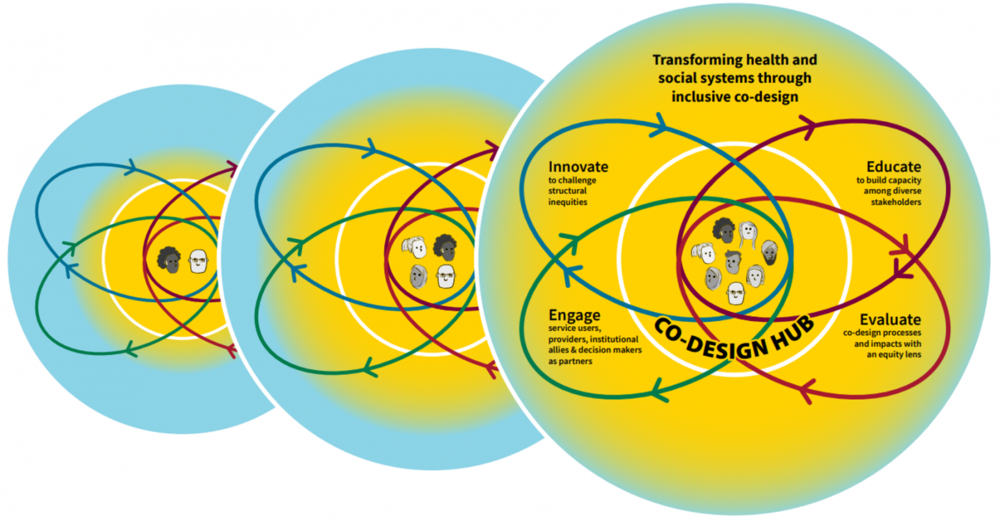Co-Creating Services with Equity-Deserving Populations
What is Co-Design?
Over the last decade, codesign has emerged as a ubiquitous research and service/systems development approach ranging from technology development to health and social system change.
Codesign, at a basic level, refers to application of user-centric research and service/systems development approaches in order to solve a particular problem or challenge. However, codesign has also been described as a dynamic, creative approach to research that embraces partnership with community, and focuses on systems change and improving human experience
Who We Are
We are an interdisciplinary group of lived experience experts, advocates, educators, trainees and researchers. Learn more about the Co-Design Team here.
The team is led by Dr. Michelle Phoenix, Dr. Sandra Moll and Dr. Gillian Mulvale.
What We Do

The visualization of our theory of change [1] represents people at the centre of all our work, and the importance of relationships in the process. The intersecting ovals represent our core strategies designed to work towards our vision of system change:
a) to engage a range of key stakeholder partners from service users to policy makers
b) to educate and build capacity for people to engage in inclusive co-design
c) to promote innovation that moves beyond the status quo
d) to evaluate the implementation and impact of inclusive co-design.
The arrows represent the dynamic evolving nature of this work and the intersections between the strategies. The three overlapping images depict our proposed growth over time in terms of our sphere of influence, expanding our reach from local to global across a range of diverse stakeholder communities.
[1] Micsinszki, S. K., Buettgen, A., Mulvale, G., Moll, S., Wyndham-West, M., Bruce, E., Rogerson, K., Murray-Leung, L., Fleisig, R., Park, S., & Phoenix, M. (2022). Creative processes in co-designing a co-design hub: towards system change in health and social services in collaboration with structurally vulnerable populations. Evidence & Policy, 18(2), 291-310.
